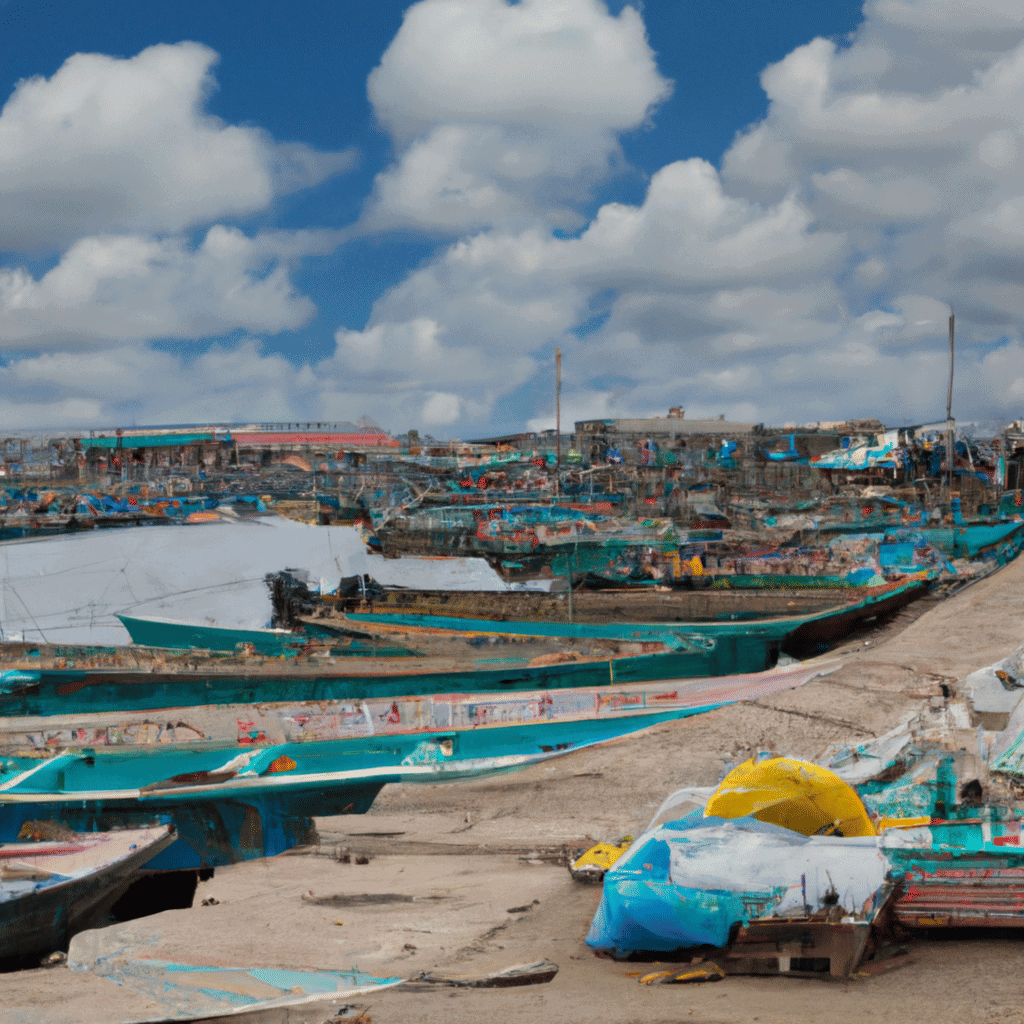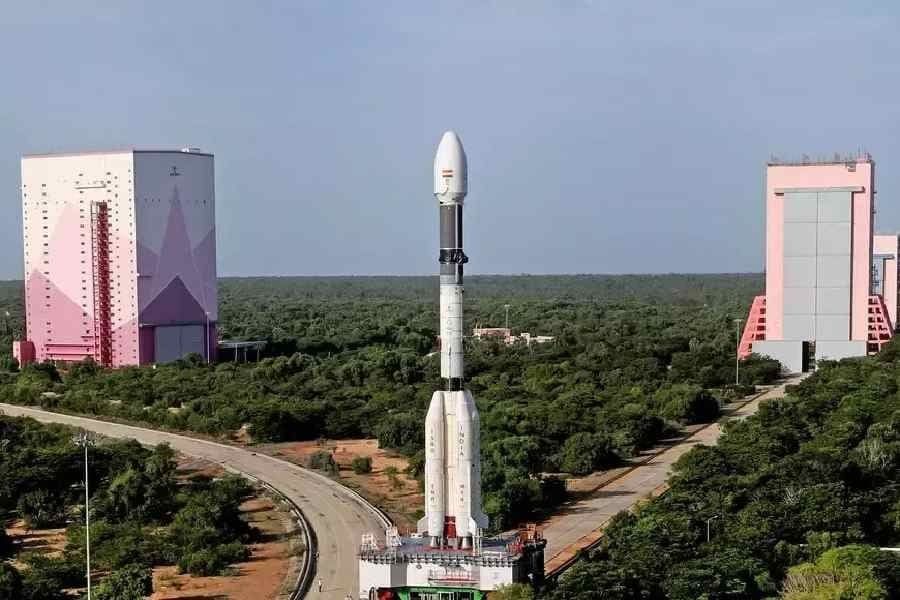PIB Summary - 23rd August 2025 | PIB (Press Information Bureau) Summary - UPSC PDF Download
Harnessing the Blue Economy: India’s Fisheries at a Glance

Overview of Blue Economy
Concept: The Blue Economy refers to the sustainable use of oceans, rivers, and water resources to promote economic growth, enhance livelihoods, and protect the environment.
Role of Fisheries in Blue Economy
- Food Security: Fisheries provide essential protein to millions of people, contributing significantly to food security.
- Employment: The fisheries sector generates employment opportunities in various areas including capture, aquaculture, processing, and marketing.
- Exports: Fisheries support exports and are a major source of foreign exchange for the country.
- Livelihoods: Fisheries ensure inclusive livelihoods, particularly for coastal, inland, and tribal communities.
- Global Production: India is the second largest fish producing nation in the world, contributing approximately 8% of global fish output.
- Shift in Production: There has been a key transformation from capture fisheries to aquaculture-led inland fisheries.
Growth in Fisheries Production (2013–14 to 2024–25)
- Total Production: Increased from 96 lakh tonnes to 195 lakh tonnes, showing a growth of 104%.
- Inland Fisheries: Grew from 61 lakh tonnes to 147.37 lakh tonnes, marking a substantial increase of 142%.
- Marine Sector: Although growth has been slower, there is a diversification into value-added products.
- Trend: Dominance of aquaculture due to advanced practices such as Recirculatory Aquaculture Systems (RAS), Biofloc technology, and cage culture.
Budgetary Support for Fisheries
- 2025–26 Union Budget: Allocated ₹2,703.67 crore, the highest ever for the sector.
- PMMSY Approved Projects: Projects worth ₹21,274.16 crore approved until July 2025.
- Infrastructure Outlay: ₹17,210.46 crore allocated for infrastructure development until July 2025.
- Kisan Credit Card (KCC) Disbursement: ₹3,214.32 crore disbursed to 4.76 lakh fishers and farmers.
Evolution of Fisheries Policy
- Blue Revolution (2015): Focused on enhancing productivity, infrastructure, and modern practices in fisheries.
- Limitations: The Blue Revolution faced challenges such as post-harvest losses, lack of traceability, fisher welfare issues, and weak credit linkages.
- Pradhan Mantri Matsya Sampada Yojana (PMMSY, 2020): Introduced a holistic value chain approach to fisheries, emphasizing employment and sustainability.
- PM Matsya Kisan Samridhi Sah-Yojana (PM-MKSSY, 2024): Aimed at financial inclusion, insurance, and digitalization in the fisheries sector.
Key Schemes and Mechanisms in Fisheries
- PM Matsya Sampada Yojana (PMMSY):. major scheme with an investment size of ₹20,050 crore (2020–26) to boost production, traceability, and fisher welfare.
- PM Matsya Kisan Samridhi Sah-Yojana (PM-MKSSY): An outlay of ₹6,000 crore (2023–27) focusing on formalization, insurance, and quality standards in fisheries.
- National Fisheries Digital Platform (NFDP): Launched in September 2024, benefiting over 26 lakh stakeholders with digital IDs and credit access.
- Fisheries & Aquaculture Infrastructure Development Fund (FIDF):. fund of ₹7,522.48 crore (2018) extended till 2026 with a credit guarantee facility.
- Kisan Credit Card (KCC) for Fisheries: Lending limits raised and cards issued to support fishers and farmers.
- Dharti Aaba Janjatiya Gram Utkarsh Abhiyan:. tribal-focused initiative supporting fish culture with an allocation of ₹375 crore.
Infrastructure and Modernization in Fisheries
- Smart and Eco-friendly Fishing Harbours: Development of fishing harbours with features like AI-based port management and solar energy.
- Aquaparks: Approval of 11 aquaparks as end-to-end hubs for fish farming and processing.
- Clusters: Notification of 34 clusters, including organic fisheries clusters in Sikkim and Meghalaya.
Technology Innovations in Fisheries
- Recirculatory Aquaculture System (RAS): Approval of 12,000 units for high-density aquaculture with minimal land use.
- Biofloc Technology: Approval of 4,205 units for natural feed and water quality management.
- Digitalization: Implementation of smart harbours and traceability systems.
Inclusivity and Social Impact in Fisheries
- Women in Fisheries: Support for projects aimed at empowering women in the fisheries sector.
- Tribal Empowerment: Dedicated schemes for tribal communities aligned with PMMSY.
- Startups: Approval of projects supporting startups in the fisheries sector.
- Micro and Small Enterprises: Support for micro and small enterprises through PM-MKSSY.
International Engagement in Fisheries
- FAO Collaboration (2025): Technical cooperation with the Food and Agriculture Organization for “Blue Ports”.
- French Development Bank (AFD): Joint workshops on eco-fishing ports and alignment with FAO’s “Blue Port Initiative”.
Challenges and Concerns in Fisheries
- Overfishing: Sustainability risks due to overfishing in the marine sector.
- Post-harvest Losses: Significant losses (20–25%) due to cold chain gaps.
- Climate Vulnerability: Risks from climate change such as cyclones, salinity intrusion, and rising sea temperatures.
- Credit Dependence: Reliance on informal borrowing by small fishers despite KCC support.
- Skill Gaps: Need for training in technology adoption in the fisheries sector.
Way Forward for Fisheries
- Export Competitiveness: Strengthening competitiveness in processed fish and value-added aquaculture products.
- Sustainability Standards: Deepening sustainability standards through eco-certifications and traceability.
- Insurance and Social Security: Expanding insurance and social security measures to reduce fisher vulnerability.
- Startups and R&D: Encouraging startups and research in feed, seed, and disease management.
- Blue Diplomacy: Promoting joint ocean governance and marine biodiversity conservation.
- Climate Adaptation: Integrating fisheries into climate adaptation plans.
Conclusion
- Doubling Production: India has successfully doubled its fisheries production in a decade, largely driven by advancements in inland aquaculture and modern technologies.
- Government Initiatives: Schemes like the Pradhan Mantri Matsya Sampada Yojana (PMMSY) and the PM Matsya Kisan Samridhi Sah-Yojana (PM-MKSSY) have been pivotal in promoting digitalization, inclusivity, and strengthening the value chain in the fisheries sector.
- Technological Advancements: The introduction of smart harbours, aquaparks, and innovative practices such as Recirculatory Aquaculture Systems (RAS) and Biofloc technology is steering the sector towards a sustainable and technology-driven future.
- Empowerment Initiatives: Efforts to empower tribal communities and women in the fisheries sector are crucial for ensuring equitable growth and social impact.
- Blue Economy Vision: The fisheries sector is integral to India’s Blue Economy vision, which aims to balance economic growth, social equity, and environmental sustainability.
ISRO’s National Space Meet 2.0 Charts Roadmap for Viksit Bharat 2047 Through Space Applications

Why Space Matters for Viksit Bharat
- Space is not just about prestige; it's about practical benefits for governance, livelihoods, the environment, and disaster response.
- Satellites and space technology are foundational for essential services like agriculture, weather forecasting, telecommunications, navigation, education, and healthcare.
- In the vision for 2047, space is seen as a core driver of socio-economic transformation, not merely a scientific endeavor.
Context of National Space Meet 2.0
- Occasion: The 2nd National Space Day, marking the successful soft landing of Chandrayaan-3’s Vikram lander.
- Venue: Bharat Mandapam, New Delhi.
- Participants: Involvement from over 60 government ministries, state/UT governments, industry representatives, academia, startups, experts, and citizens.
- Background: The first National Space Meet in 2015 laid the groundwork for governance reforms using space applications over the past decade.
- Goal: To outline a roadmap for Viksit Bharat 2047 through a collaborative approach involving the entire government and nation.
Structure of the Meet
The meet comprises 10 breakout sessions focused on specific domains:
- Agriculture and Water
- Forests, Environment, and Energy Policy
- Infrastructure and Geo-Governance
- Health, Education, and Social Welfare
- Communication, Navigation, and Technology Diffusion
- Disaster Risk Reduction
- Ocean, Weather, and Earth Resources
- North-Eastern Region and Hilly States
- Coastal States and Union Territories
- Inland States and Union Territories
Hundreds of experts have collaborated for four months before the meet to develop ready-to-implement use cases.
Highlights from Leadership
- Emphasis on space as an Earth-centric tool for crucial areas like agriculture, health, disaster resilience, and climate monitoring.
- Adoption across the government: Over 60 ministries are utilizing space technology in governance.
- Startup growth: Increase from 2 startups in 2014 to over 350 by 2025, fueled by reforms, venture capital support, and technology transfers.
- Next-generation advancements: Integration of AI, quantum computing, and big data into satellites and ground infrastructure.
- Private sector involvement: Startups are viewed as integral to the national mission and innovation engine.
Roadmap to 2040
- Development of autonomous satellite constellations and integrated systems.
- Embedding space technology in food, water, energy, environment, and governance sectors.
- Positioning India among global leaders in rocket launches, satellite production, and space applications.
Policy and Strategy
- Implementation of the Geospatial Policy 2022 and the Indian Space Policy 2023.
- Establishment of IN-SPACe as a regulatory body.
- Focus on strategic security with resilient and indigenous space infrastructure vital for defense purposes.
- Vision for global leadership in space, including partnerships for debris management, surveillance, mining, and energy.
Roadmap Announced
a) Satellite Targets
- Increase operational satellites threefold within three years.
- Aim for 119 satellites by 2040, focusing on Earth Observation, Satellite Navigation, and Satellite Communication.
b) Application Strategy
- Government-led satellites for societal and governmental services (medium to coarse resolution Earth Observation and NAVIC).
- Public-Private Partnership (PPP)-led satellites for high-resolution Earth Observation and communication satellites for commercial viability.
- Expand Earth Observation, Satellite Navigation, and Satellite Communication for mainstream governance and economic use.
c) Technology Agenda
- Integration of AI, quantum computing, and big data with satellite and ground infrastructure.
- Development of new-generation instruments, autonomous constellations, and advanced launchers.
- Strengthening infrastructure for technology demonstration, led by the Department of Space and ISRO.
Key Themes Emerging
- Space for Governance: Utilization of space technology for agriculture monitoring, e-learning, telemedicine, disaster warning, fisheries management, and urban planning.
- Startup Ecosystem: Growth of space startups, now exceeding 350, involved in launch services, satellite production, and data analytics.
- Reforms Backbone: Impact of the Indian Space Policy 2023, IN-SPACe establishment, liberalized Foreign Direct Investment (FDI), and Public-Private Partnerships (PPP).
- Security Dimension: Use of satellites for defense purposes and protection against space threats.
- Global Role: Transition of India from a space user to a leader in space diplomacy and climate monitoring satellites.
Challenges Identified
- Balancing commercialization with sovereignty in space activities.
- Need for resilient indigenous infrastructure to mitigate anti-satellite threats and cyber risks.
- Addressing space debris and sustainability issues as the number of satellites increases.
- Bridging the capacity gap by training officials, startups, and states to effectively use satellite data.
- Overcoming financing challenges for space technology small and medium enterprises (SMEs).
Way Forward (Viksit Bharat 2047 Vision)
- Institutionalizing the National Space Meet annually to ensure continuous development of the roadmap.
- Expanding the Pan-India consultative mechanism to aggregate demand for Earth Observation, Communication, and Navigation services.
- Building global alliances for climate change, space debris management, resource mining, and legal governance.
- Strengthening the Public-Private Partnership (PPP) ecosystem to help startups scale from innovation to execution.
- Establishing space as foundational infrastructure similar to railways in the 19th century, electricity in the 20th century, and the internet in the 21st century.
Conclusion
- The National Space Meet 2.0, organized by ISRO, signifies a shift from focusing on symbolic achievements to fostering systemic transformation through space technology.
- Space is envisioned as the connective framework for governance, impacting various aspects of citizens' lives, including farmers, students, patients, fishermen, and disaster survivors.
- India’s journey in space is projected to evolve from initial rocket launches in Thumba to achieving global leadership in space by 2040.
- By 2047, space technology is expected to be a fundamental pillar of Viksit Bharat, promoting inclusivity, resilience, and global competitiveness.
FAQs on PIB Summary - 23rd August 2025 - PIB (Press Information Bureau) Summary - UPSC
| 1. What is the Blue Economy and how does it relate to India's fisheries? |  |
| 2. What role does ISRO play in promoting the Blue Economy in India? |  |
| 3. What is the significance of the National Space Meet 2.0 for Viksit Bharat? |  |
| 4. How does space technology contribute to the sustainable management of fisheries in India? |  |
| 5. Why is it important for India to focus on the Blue Economy in the context of its fisheries sector? |  |





















